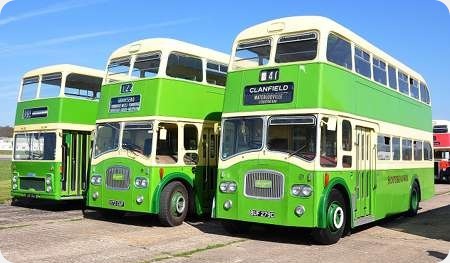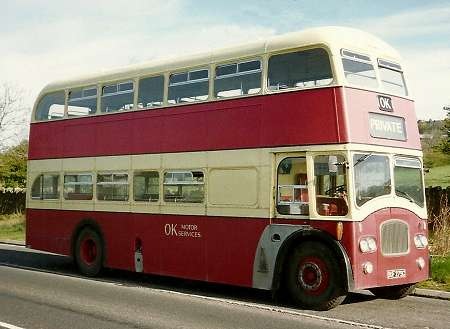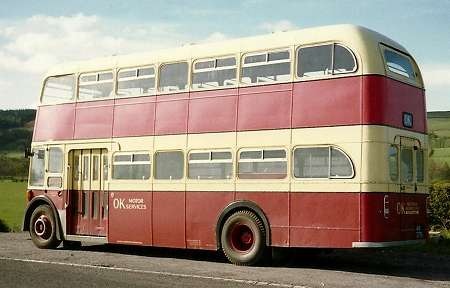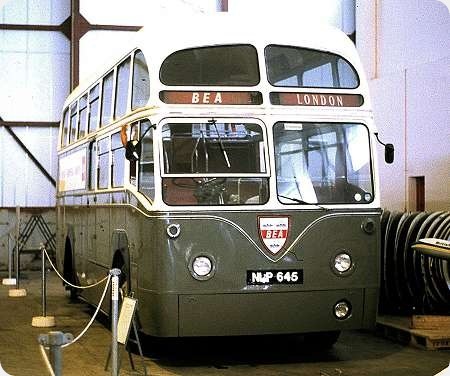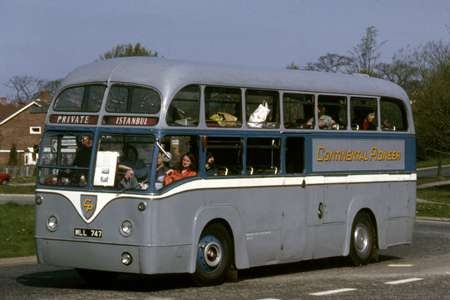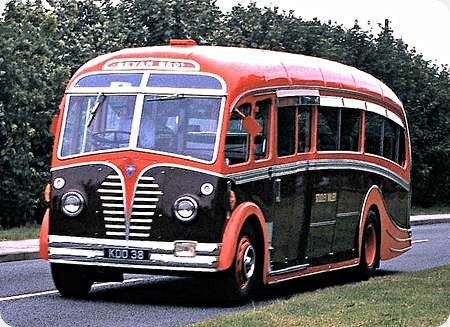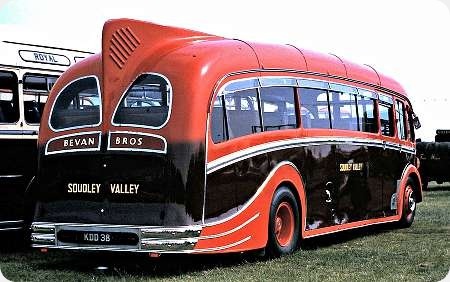Southdown – Leyland Titan – BUF 279C – 279
Southdown Motor Services Ltd
1965
Leyland Titan PD3/4
Northern Counties FH39/30F
BUF 279C fleet number 279 is nearest the camera in this view taken at Dunsfold on 10 April 2011. Her close cousin, 972 CUF fleet number 972, is alongside. Both are Leyland titan PD3/4 vehicles with Northern Counties FH69F bodies. 972 was new in 1964 and 279 is from 1965. The third member of the group is UUF 116J fleet number 516, a Bristol VR/ECW combination. The vehicle is obviously too new for these pages, but it does show what a timeless livery the Southdown one was – dignified on any outline and far better than certain random applications of paint seen on too many buses these days.
Photograph and Copy contributed by Pete Davies
13/04/16 – 06:04
The "dignified colour scheme" seems to have had quite an evolution. When venturing darn sarth many years ago, the scheme that impressed and still does is that olivey green which can be seen on the ill-starred 1952 PD2 "coach" on this site. We seem to have moved on here, even allowing for colour process and it’s now a bit vivid – but at least not the miserable NBC green which has also featured here.
Joe
13/04/16 – 06:05
Attached are 2 pictures of 279 with OK Motor Services of Bishop Auckland.
This bus was my regular vehicle when I worked there, on the Bishop Auckland to Wolsingham School AM journey.
Stephen Howarth
13/04/16 – 13:42
Joe, I ventured ‘darn sarth’ many years ago, but I stayed! I only remember this style and the NBC green. Perhaps the livery on that PD2 was a failed experiment! My trouble is that, when I return to the north west, folk up there think I’m a Southerner. Nice views, Stephen! Another dignified livery.
Pete Davies
13/04/16 – 13:43
The Southdown livery is one of my favourites, along with Royal Blue and Brighton Corporation/BH&D, before the Corporation changed to an insipid blue and white, while BH&D was absorbed by Southdown and the livery became the much detested National Green.
David Wragg
14/04/16 – 06:02
I am Sussex born and bred, and feel I can make some comments on Southdown livery. The green used on most preserved vehicles tends to be a little too bright. From memory, and looking at some of the other Southdown colour pics on this site and in various books, Southdown green was slightly more ‘yellowy’ and closer to a true apple green. However, we should not let this detract from the splendid job that the preservationists have done.
Roy Nicholson
14/04/16 – 08:14
Interesting, Roy. The Southdown which made such an impression on me was yes, apple green (introduced, it says somewhere, in 1932) which was less vivid and yes a bit yellowy or even olivey. If you look around the net, there seem many shades of Southdown green, but occasionally I see the one I remember. It went with holidays!
Joe
31/07/17 – 07:25
Southdown livery brings back many happy memories of holidays with relatives in Fareham in the 1960’s, taking buses to Lee-on-Solent or Southsea
Andrew Stevens
23/11/17 – 07:23
I drove one of these in the eighties. It had been converted for exhibitions, with lengthways seating, a fridge, sink and a bar upstairs and downstairs. It was registered as a motor caravan by this time. I’m fairly positive it is no longer in existence.
Geoff Bragg
